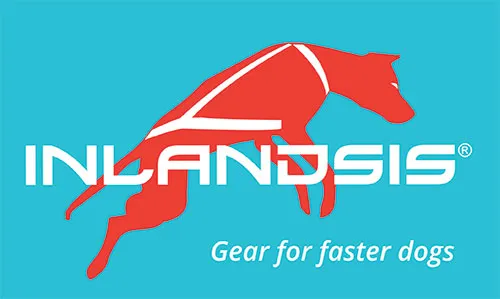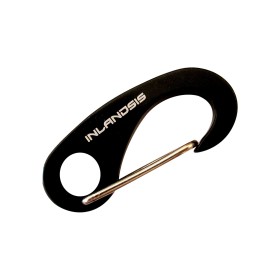[Training Tips] Endurance training for sports dogs.
In our article "How to train your sports dog?", we covered the basics of training a sports dog. Now, let's explore what endurance is and how to train it in your dog.
What is endurance, and why train it?
Endurance is defined as the "ability to resist physical and mental fatigue" (Larousse). By working on endurance in sports, we improve the overall body's capabilities during physical exertion:
Development of cardiac capacity and blood flow
Habituation of the entire body to physical exertion: muscles, tendons, joints
Reduction of the risk of injury
Improvement of mental resilience during exertion
Through endurance training, a foundation is built to withstand increasingly sustained efforts. It is, therefore, the basis of all physical training.
Note that two types of endurance are distinguished:
Fundamental or aerobic endurance (the cardio-respiratory system can supply all the oxygen needed for the exercise). Fundamental endurance is exercised at a low pace, usually at a trot, a pace the dog can maintain for several hours. This article focuses on this type of endurance.
Anaerobic endurance or resistance to effort (the cardio-respiratory system cannot supply all the oxygen needed for the exercise). Anaerobic endurance is the ability to maintain sustained effort over time. It is indirectly trained during strength and speed sessions discussed in articles like "Developing your dog's strength" and "Increasing your sports dog's speed."
"Fundamental endurance should represent 80% of the overall training time to build a solid training foundation." - Rémy Coste
How to train your dog's fundamental endurance?
Fundamental endurance is trained during low-intensity, long-lasting efforts (from 30 minutes to several hours). To train your dog's fundamental endurance, you must follow two essential principles:
Unharnessed exercise, on a leash, or controlled off-leash.
Low pace, usually at a trot.
Low-speed mountain biking (10 to 16 km/h depending on the dogs) with the dog or dogs behind the cyclist is ideal for this type of exercise. The dog can be controlled off-leash (always behind you and nearby), on a leash beside you without pulling, or attached to the bike with a retractable leash.
If you prefer running, you can also work on your dog's endurance by running with the dog behind or beside you, still without pulling.
Some mushers also use a "walker," a kind of large carousel that allows dogs to run freely at a controlled pace. Often used in addition to mountain biking.
A FUNDAMENTAL ENDURANCE SESSION WITH YOUR DOG
Start each session at a very slow pace for 10 to 20 minutes to warm up your dog.
Then, set your cruising speed for the session by matching your dog's trot or an easy-to-maintain gallop for him. This speed is generally between 10 to 16 km/h. Feel free to accelerate occasionally to keep your dog's focus or find ways to make the session enjoyable for both you and your dog.
After a short break at the end of the session, resume at a very slow pace for 10 to 20 minutes for active recovery. Feed your dog immediately after your session to promote recovery and optimize digestion time before the next effort.
TRAINING YOUR DOG YEAR-ROUND WITH ENDURANCE
Since fundamental endurance training is less intense and the dog is under control, it can be done without risks even at relatively high temperatures (around 20 degrees Celsius). The dog is even less prone to overheating during a controlled endurance session than during a free-roaming walk where it can unleash its excitement. If necessary, take cooling breaks in a river, lake, or any water source.
It is generally possible to train your dog year-round, especially in the early morning during the summer. However, always be vigilant to your dog's reactions to heat and adjust your outings accordingly.
GRADUALLY INCREASE THE VOLUME OF FUNDAMENTAL ENDURANCE TRAINING
Depending on your dog's capabilities, start with sessions of about 45 minutes to an hour. These sessions can be daily or every other day, depending on your availability and your dog's motivation.
To adapt to the climate and potential race schedules, the training volume is often reduced in the summer, focusing on low-intensity endurance. The volume of training is then gradually increased, meaning the duration of sessions and/or the number of sessions per week, as temperatures decrease in the fall. This progressive increase can align with the goals set for the year, typically during winter or spring.
At an equal training volume and for better adaptation to effort, it is better to perform "short" sessions daily than very long sessions only 1 to 2 times a week.
How to train your dog for fundamental endurance?
As mentioned, working on fundamental endurance with your dog requires that it be under control, either off-leash or on a leash. Therefore, a dog's education is essential to approach your endurance sessions with peace of mind.
AT WHAT AGE TO START EDUCATING MY DOG FOR ENDURANCE?
While it is ideal to integrate controlled freedom training into a puppy's general education, you can start with an adult dog.
There is no specific age to start learning controlled freedom, a prerequisite for working on endurance.
OUR TIPS FOR TEACHING CONTROLLED FREEDOM TO YOUR DOG
Start by working on the "behind" command with the dog on a leash, on foot. Conduct short daily sessions to keep your dog attentive and quickly accustomed to this exercise. To validate this first step, your dog must walk behind you without trying to overtake you or pull on the leash. This command is also very useful in cani-hiking!
If you want your dog to evolve with controlled freedom, gradually remove the leash while keeping your dog's attention. You can start in a fenced space for added safety. Gradually add events like encountering another dog or a bike so that your dog always stays behind you.
If you plan to do your endurance training on a mountain bike, repeat the same process on your bike.
Any dog training requires patience and availability. Make sure you are in a good mood before starting a training session with your dog or puppy.
What equipment is necessary to work on fundamental endurance with your sports dog?
Fundamental endurance is trained with the dog unleaded. Therefore, you will not need pulling harnesses for your dog during these sessions.
Always take one leash per dog with you (our Polaris walking leashes can be easily worn over the shoulder when your dog is off-leash).
If you are working on your dog's endurance while running, the use of a bungee canicross leash and a harness can allow you to run hands-free.
When biking, it is neither recommended nor comfortable to hold your dog on a leash with one hand. Ideally, let your dog be in controlled freedom behind the bike. If your dog needs to be attached, using a retractable leash, fixed on you or on your bike, can be an interesting solution.
Antoine's tip: "To train my dog for endurance behind my mountain bike while making sure she doesn't chase after a deer, I use a reel originally designed to tow a child on a bike. Attached to my seat post and with a Necklight carabiner on the dog's side, it works perfectly, and I have peace of mind!"
To sum up:
Fundamental endurance should represent the majority of sports dog training (approximately 80% of training time).
Prior education of the sports dog is essential (dog behind, without pulling).
Fundamental endurance training is done unleaded.
The pace should be slow, usually at a dog trot.
Ideally, have your dog behind you in controlled freedom.
However, the use of a leash or a retractable leash may still be necessary to maintain control in all circumstances.
Endurance can be trained through running or mountain biking.

![[Training Tips] Endurance training for sports dogs.](https://www.inlandsis.fr/stupload/stblog/1/6/38/638large.jpg)


